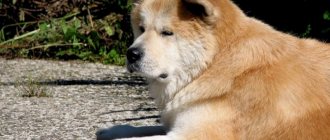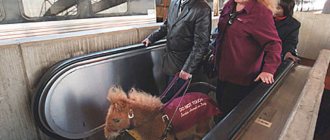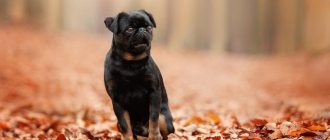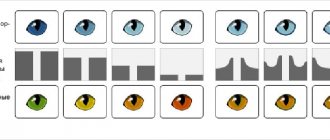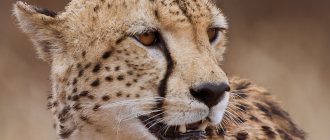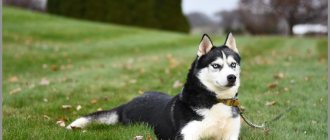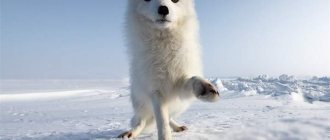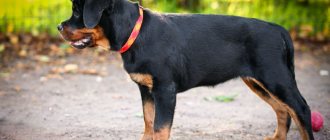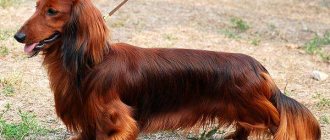- Wild animals
- >>
- Mammals
The bison is rightfully recognized as the ruler of forests.
This is a very powerful, majestic and incredibly strong animal. It is a representative of ungulate chordate mammals. The bison is considered one of the largest ungulate mammals on earth. In size and weight they are second only to American bison. Compared to their ancestors, modern bison are an order of magnitude smaller. In the last century, these animals were on the verge of extinction. It took people a lot of effort to preserve this unique species and create conditions for its increase.
Origin of the species and description
Photo: Bison
The bison is the last representative of the wild bull on European territory. In accordance with historical data, animals descended from their ancient ancestors - bison. They represent the bovid family and belong to the ungulate herbivorous mammals.
Historical data indicate that during the Ice Age the bison already existed and was the object of hunting by people of that time. These facts are confirmed by rock paintings of that time discovered by archaeologists. Also, mention of this amazing beast was found in the ancient chronicles of the Egyptians and Romans. It is known for certain that in ancient Rome bison were participants in gladiatorial fights.
Bison's brother
In terms of morphological and genetic characteristics, bison are close to bison; they interbreed freely and produce fertile offspring in any combination. The genetic similarity of bison and bison has been confirmed by the latest research, but they are geographically isolated, and despite the absence of significant morphological, ecological and adaptive differences, bison and bison are classified as close but independent species.
Photo: Anton Agarkov / WWF Russia
Appearance and features
Photo: Animal bison
The appearance of the animal is striking in its grandeur and power. The average body length of an adult is about 3 meters. The height of the animal at the withers is about 2 meters, the circumference of the neck at its widest point is 2.5-3 meters. The front part of the body is significantly more powerful and massive. The neck is short and massive. Together with the anterior part of the back, the neck forms a voluminous, massive hump. Bison are distinguished by a wide chest and a collected, toned abdominal area.
The head of artiodactyls is set low. This is why it feels like the tail is located above the head. Externally, the bison's muzzle is small in size relative to the body. A massive frontal part is noted. The parietal part has fairly strong, massive horns. The ends of the horns are most often knocked down or pointed. The horns are smooth, shiny, black. The ears are small, rounded, and covered with thick hair. Upon visual inspection they are practically invisible. It is characteristic that animals do not differ in visual acuity, but have an excellent sense of smell and hearing.
Video: Bison
Interesting fact: The animal’s fur can be of different colors depending on the subspecies and region of its habitat. In Belovezhsk bison it is gray-brown with a copper-brown tint. The hair on the head is noticeably darker, dark brown, almost black beard. In winter it becomes thicker and darker.
Characteristic features of representatives of this species:
- The jaws have 32 teeth;
- The oral cavity, including lips and tongue, is blue-lilac in color;
- The tongue is lined with rather large papillae;
- Short, massive neck;
- Huge, round black eyes;
- Thick, strong, stocky legs with huge hooves;
- Tail length from 60 to 85 centimeters;
- The tail ends with a fluffy tassel;
- There is a beard in the area of the anterior chest and lower jaw;
- The head and chest are covered with thick, curly hair;
- The presence of a hump;
- Rounded horns;
- The weight of one adult individual reaches 800-900 kilograms;
- Males are much larger than females.
Despite their large dimensions, bison can quite quickly jump over obstacles about 1.5-2 meters high.
So we figured out what a bison looks like and how much it weighs. Now let's find out where the bison lives.
Where does the bison live?
Photo: Bison Reserve
Bison are relatives of wild bulls. Until the moment of mass extermination, they inhabited a vast territory. They lived in large numbers in the Caucasus, in western, southeastern and central Europe, Iran, and Scandinavia. It is noteworthy that at that moment they were located not only in the forest area, but also in open areas - steppes, valleys. As they were exterminated, representatives of the species moved to increasingly remote and remote areas.
Today, the regions where bison live are forest-steppes and forest areas that are located near water bodies. Today, their main habitat is the territory of Belovezhskaya Pushcha.
We found out where the bison lives, now let's figure out what it eats.
Large nature reserves in Russia
Now let's look at where the bison lives in Russia, in which reserves. Since the bison is listed in the Red Book, it is almost impossible to find it in the wild today. But there are a large number of reserves and nurseries in which animals are kept in the most comfortable environment.
In the Prioksko-Terrasny State Biosphere Reserve (Moscow region, Serpukhov district), bison are raised, and subsequently they are sent to various regions of Russia, the CIS and Baltic countries. During the period from its foundation in 1948 to 2009, 328 individuals were bred. Animals are also raised:
- In the Oksky State Nature Reserve, located in the Ryazan region.
- In the Cherginsky nursery in Altai.
- In the Pleistocene Park (Republic of Yakutia).
- About 50 individuals live in the Klyazminsko-Lukhsky reserve (Vladimir region). Animals live practically in the wild.
What does the bison eat?
Photo: Bison from the Red Book
The bison is a herbivore. The basis of the diet of ungulates is various types of vegetation. Scientists have found that the source of food for this representative of ungulates can be about four hundred species of vegetation. Bison feed on tree bark, leaves, young shoots of bushes, and lichens.
Interesting fact: The diet is adjusted by the region of residence, as well as climate and seasonality. In summer, animals eat large quantities of berries and maple greens. In autumn they can eat mushrooms, berries, acorns, and hazelnuts.
On average, one adult requires about 45-55 kilograms of food per day. When kept in protected areas, bison are fed with hay. Such feeders are organized only for this type of animal. The claims of other animal species for food provoke anger and attacks from bison.
The vital element is water. Animals need it daily. Even if they hide from the scorching sun in the forest thickets, by the end of the day they always go out to drink.
We have found out what the bison eats, now we will understand its character and way of life.
Nutrition
The diet of herbivorous bison includes a huge number of grass species. There are about 400 of them. They will never refuse leaves, shoots of trees, shrubs, grasses, mosses, lichens and mushrooms. This is how animals eat in the warm season.
With the onset of cold weather, the diet changes somewhat. Bison eat bark, aspen, willow, linden, and maple branches. During such periods, workers in protected areas help them feed themselves by installing special feeders with hay.
These animals prefer life in one place without traveling long distances. Therefore, in order to somehow resettle them and expand their habitat, people always try.
Features of character and lifestyle
Photo: Bison in Russia
By nature, bison are considered peaceful and calm animals. It is unusual for them to show aggression. A person should not be afraid of meeting him. The animal can come close to people. They will not cause harm or pose a danger unless they are threatened. However, if the animal feels a threat to itself or its offspring, it becomes very aggressive and extremely dangerous. It can make sounds that resemble a snort.
Interesting facts: Shaking the head also indicates that the animal is nervous. When attacked, the bison accelerates and strikes with its massive, strong horns. Animals have a very keenly developed instinct of self-preservation.
If an ungulate encounters an obstacle on its way that poses a danger to it, it prefers to bypass it. Bison are not considered solitary animals. They form a herd, which includes from 3-4 to 16-20 representatives of the species. The bulk of the herd are females and young animals. At the head of the herd is the most experienced, wise and mature female. Males lead an independent lifestyle. They tend to join the herd during the mating period. In the cold season, severe frosts, small herds unite with each other.
Bison are herbivores. They go out to pastures early in the morning and in the evening. During the day, they most often rest, sleep, bathe in the sand, bask in the sun, chew gum, and brush their fur. In spring, groups of animals come closer to water sources. In summer, when it is very hot, on the contrary, they retreat into the forest thickets. In the absence of vegetation, they are able to travel considerable distances in search of it. They have strong, powerful legs that allow them to cover long distances without fatigue. Bison can swim.
Bison are often attacked by predators. At such a moment, they take a defensive position in the form of a ring, in the middle of which are the weakest and most unprotected members of the group.
Social structure and reproduction
Photo: Baby bison
The mating season of bison begins at the end of July and lasts until the beginning of October. During this period, males fight each other for the right to mate with females. Males leading a solitary lifestyle join groups and displace young individuals from it. After this, courtship with the females begins. If there are several contenders for mating with one female, the males fight. The loser leaves the herd, the winner continues his courtship.
Interesting fact: The gestation period lasts 9 months. By the time the baby is due, his mother is looking for a secluded place. Newborns are born one at a time, extremely rarely in the number of two. The average body weight of a newborn is 23-26 kilograms.
After birth, the female carefully licks her baby. After 1.5-2 hours from the moment of birth, the baby can stand on his feet and freely follow his mother. Cubs tend to look for their mother by smell. The female and her offspring return to the herd after 2-3 days to get acquainted with all its members.
The baby tries plant foods for the first time 3-4 weeks after birth. However, they continue to feed on mother's milk for up to a year on average. The cubs exist next to their mother in a herd environment until they are 3-4 years old. Males from the young that separate from the group gather together. They exist in small groups for the first few years. After gaining experience and strength, everyone begins to lead an independent, isolated lifestyle.
Growth continues up to 5-6 years, the cubs become sexually mature upon reaching 3-5 years of age. The female is capable of giving birth every year. Males participating in procreation are mainly aged from 6 to 16 years. Young and old representatives of the stronger sex are not allowed by stronger and more robust males. The average life expectancy of a bison in natural conditions is 30-35 years. In reserves they can live 5-10 years longer.
Struggle
At the end of summer and beginning of autumn, female bison begin to estrus, and males begin the rut. It is noteworthy that bison fights are not aggressive. The males fight with their horns, and the weaker one leaves; the winner does not pursue the loser. Therefore, such fights rarely end in serious injuries. The nature of the fight changes significantly if it is not a fight for a female with another male, but for territory.
The bison drives away deer, elk and other ungulates especially fiercely, even to the point of death. The only enemy of this giant is a pack of wolves, especially in winter with high snow levels, when movements are difficult and require a lot of energy. Despite its large size and heavy weight, the bison is very fast, hardy, and can jump up to two meters in height.
Natural enemies of bison
Photo: Herd of bison
In natural habitats, the main enemies of the bison are predatory animals.
Natural enemies:
- The Bears;
- Lynx;
- Wolves;
- Leopards.
The most vulnerable to predators are young individuals, as well as sick, weakened and old bison. Adult females and males are quite capable of repelling any predator. The exception is an attack on lonely males who have strayed from a herd of females by packs of predators. In this case, they win due to their quantitative advantage.
In addition to natural predators, humans are considered a dangerous enemy of the bison. Scientists claim that it was hunters and poachers who almost completely exterminated these representatives of ungulates in natural conditions. According to official data, in the 20s the species practically disappeared from the face of the earth. It was possible to preserve it only thanks to the creation of protected areas and national parks, as well as due to the fact that several individuals were preserved in private ownership.
Interesting fact: In the last century, many merchants and nobles enjoyed hunting animals due to their enormous size. Young animals were considered of particular value, as they have tender and very juicy meat.
It should also be noted that in addition to poachers and predators, diseases have significantly reduced the number of animals in nature. These include immune diseases, helminthic infestations, foot and mouth disease, anthrax, and gastrointestinal pathologies.
Population and species status
Photo: Bison calf
Today, bison have been officially assigned the status of an endangered species. Population growth has led to the expansion of the boundaries of human-developed territories. Forests were cut down on a large scale and many types of vegetation were destroyed.
In ancient times, the habitat of these powerful animals was huge. They lived throughout all the territories of Eurasia. Poaching and extermination in large numbers led to the fact that at the beginning of the 20th century, bison were found only in the territory of Belovezhskaya Pushcha and the Caucasus. At this point, there are only about 65 of them left in the world.
Today, thanks to the efforts of scientists, it has been possible not only to preserve, but also to increase the population of wild bulls. According to scientists, there were just over 3,000 individuals in the world in 2006. Only half of them are in natural conditions.
- In order to preserve the species, bison crossed with their closest relatives - American bison;
- In order to preserve these representatives of ungulate mammals, the species is listed in the IUCN Red List as vulnerable;
- The animal is listed in the Red Book of Russia with the status of “a species that is on the verge of complete extinction.”
Winter came…
What does the bison eat in winter? During the frosty period, the bulk of the diet consists of the bark and branches of deciduous trees, oak, crab, ash and others, as well as mosses and lichens, which predominate in mixed forests. The bison sleeps in the forest most of the day; watering and feeding are spent 2-3 hours before sunrise and sunset, when all insects are asleep. Sometimes it feeds during the day.
